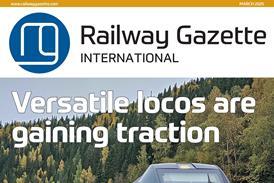THE FIRST section of the 550 km Chuo Maglev between Tokyo and Osaka could open in 2025, following an announcement by Central Japan Railway that it is prepar-ed to finance the project completely.
JR Central had long argued that the state should fund the infrastructure works. But on December 25 President Masayuki Matsumoto revealed that JR Central would go it alone. 'The government's financial problems have slowed progress', he explained. 'If we count on state money indefinitely, it will take longer to get our plans off the ground.'
The aim is to halve current journey times, putting Nagoya 40 min and Osaka just 1 h from the capital. Construction of the initial 290 km from Tokyo to Nagoya is expected to cost ¥5 100bn. Funding this in full would increase JR Central's long-term debt from ¥3 500bn to ¥4 900bn, but Matsumoto suggested that a projected 10% increase in annual revenue would allow the extra debt to be paid off in eight years after opening. Nevertheless, the company's shares fell 9% following the announcement.
JR Central is currently spending ¥300bn a year on maglev research, and is planning to extend the Yamanashi test track - which would form part of the Chuo alignment - from 18·4 km to 42·2 km by 2012.
It remains unclear how the Chuo Maglev trains would reach the city centres at each end of the route. JR Central will no doubt be watching developments in Shanghai, where in January police were called in to break up protests against a planned cross-city extension of the Transrapid maglev to the domestic airport at Hong Qiao. The protesters claim this would cost US$69m/km, double the official estimates, but they are more concerned about the effects of noise and electromagnetic radiation.




















